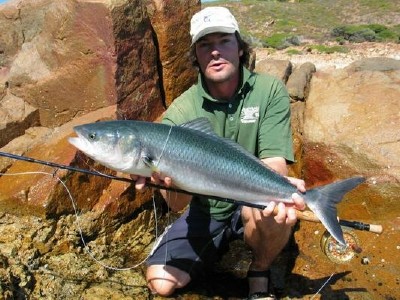Facts About Arripis trutta
Arripis trutta, commonly known as kahawai in New Zealand and Australian salmon in Australia, is a fascinating marine fish often mistaken for salmon or trout due to its appearance. However, it is not actually related to the Salmonidae family. This sleek fish has a long, slender body and distinctive features such as serrated bony ridges near its eyes. Juveniles exhibit golden bars that turn into spots as they mature. Typically, these fish have a dark bluish-green coloration on the dorsal side and a silvery white ventral side, with yellow pectoral fins and blackish edges on their tail and dorsal fins.
Arripis trutta inhabits the cooler waters around the southeastern and southwestern coasts of Australia and New Zealand. They are a migratory species, traveling extensive distances. Adults typically form large schools in oceanic and coastal areas, while juveniles prefer the safety of bays and estuaries. Their diet primarily consists of small pelagic fish and crustaceans, although it can change over time due to environmental shifts, potentially linked to global warming.
These fish are vital to the ecosystem, playing a key role in transferring energy within the pelagic food chain and serving as a food source for top predators like seals, dolphins, and sharks. They spawn in the surf zones between Lakes Entrance in Victoria and Bermagui in New South Wales and can live up to 26 years. Arripis trutta is commercially fished using purse seines and is also a favorite among recreational anglers who enjoy using light tackle or fly fishing techniques.
The species was first described in 1801 by Marcus Elieser Bloch and Johann Gottlob Theaenus Schneider. Both Australia and New Zealand manage their fisheries to ensure the populations of Arripis trutta remain stable. Recreational fishing for these fish is a popular pastime, attracting many enthusiasts who appreciate the challenge and excitement of catching them.
